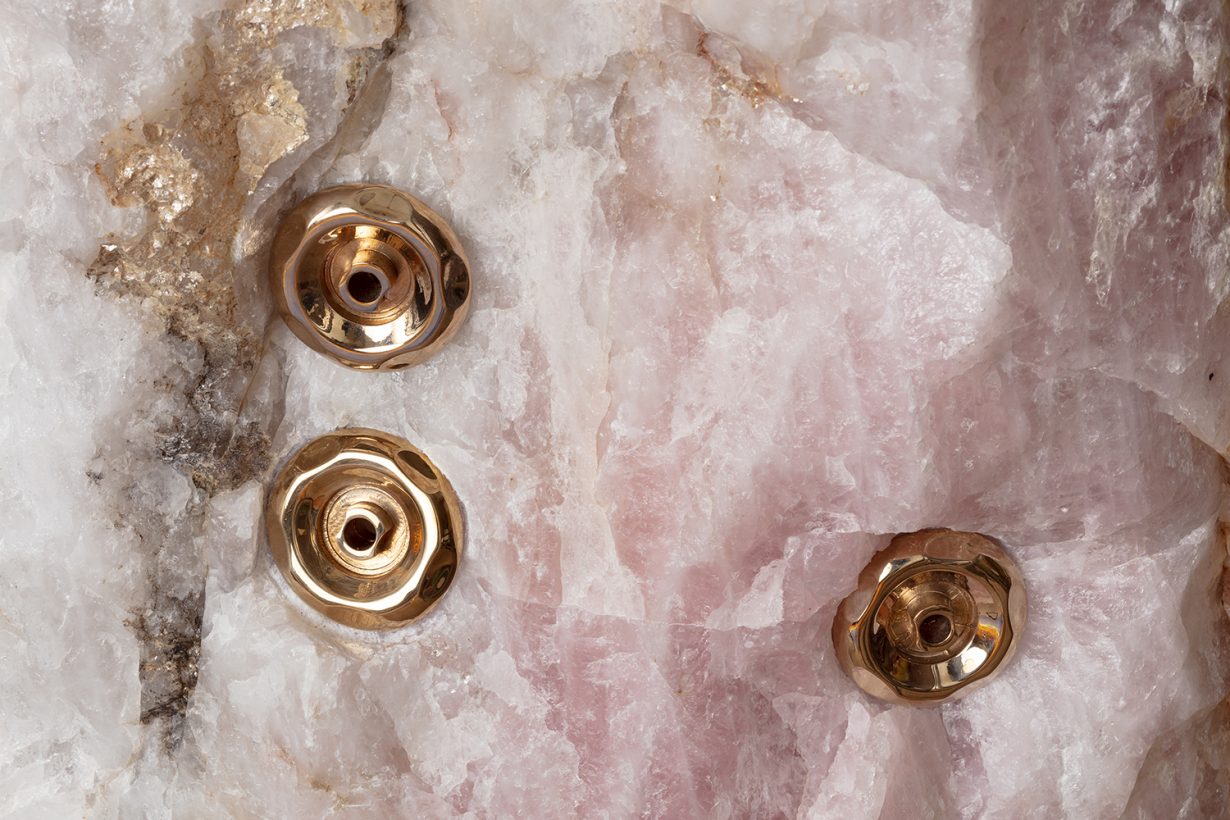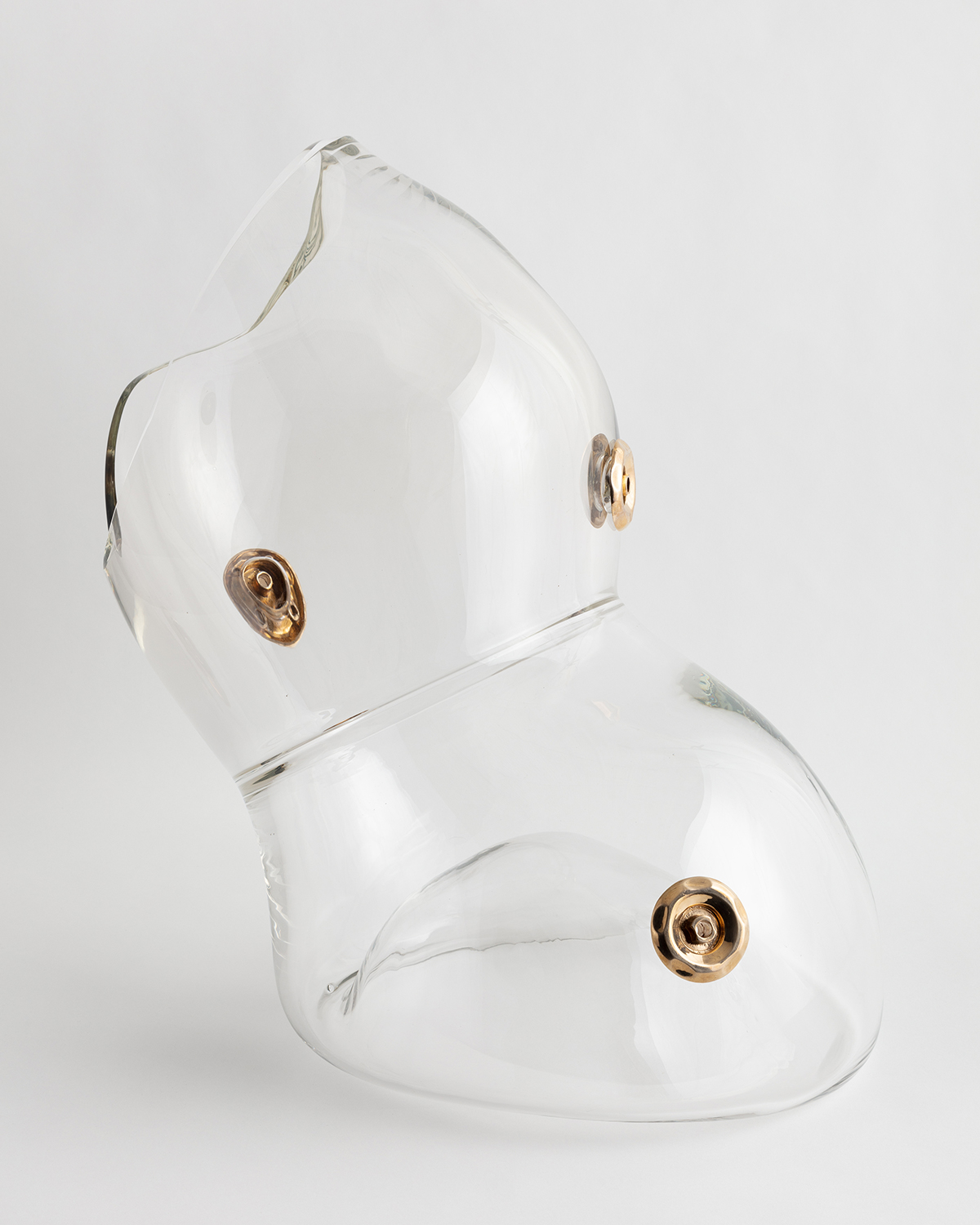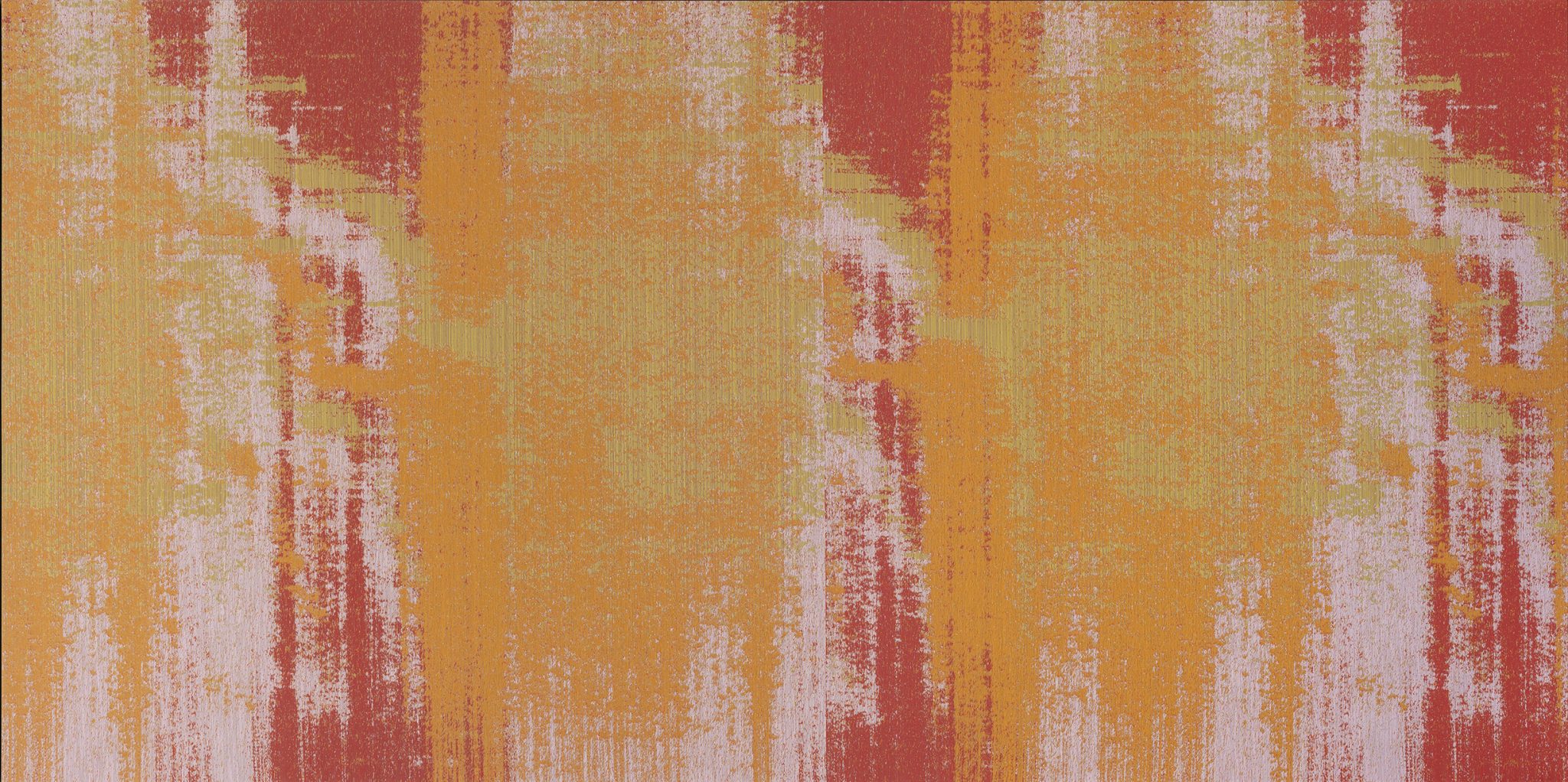The New York-based artist gives shape to the psychic effects of a life under a technocapitalist regime
At first glance, Mika Tajima’s art seems innocent enough. Bubblelike glass sculptures that speak elegantly to solidity and transparency. Jacquard-woven canvases sporting abstract geometric patterns. Abstract paintings in which rhythmic bands of colour fade in and out of each other. A large rose-quartz rock-crystal that might have come straight out of a geomancer’s warehouse. They give off vibes of lightness, breath, meditation and wellbeing. The sort of objects you might imagine decorating a young executive’s apartment. A smorgasbord of worldly culture. Things designed to make you feel good about yourself. And in that sense, a narcissist’s playground. But in a world in which looking after ourselves (for the sake of everyone else) is the prime directive, what could be wrong with that?
What you see is an illusion. And not just in the sense that most art and contemporary culture is such. The glass sculptures (from the artist’s recent, ongoing Anima series, 2020–) and the rock (the latest addition to the Pranayama series, begun in 2017, its title evoking the yogic practice of breath control) are studded with brass valves – suggestive of punctures in a body that is apparently whole and the presence of a contained energy, a pressure that requires the occasional release lest these objects explode. The gradated paintings (the Art d’Ameublement series – titled after Erik Satie’s 1917 ‘furniture music’, a precursor to ambient music) are encased in clear acrylic boxes, a type of prophylactic, with the paint sprayed onto the inside, and captured, as it were, midair. The patterns on the woven canvases (from the longstanding Negative Entropy series, 2012–) look like charts, measurements – a recording of some sort of dataset prepped up for analysis. Everyone alive today (or at least the subset of everyone that reads this magazine) knows that big data is bad, a form of control.

“Over the last several years I’ve been really focusing on the psychic infrastructure of control and the infrastructures that have shaped our lives and really manipulate or influence us and our desires and the way that we live in the world now,” the artist explains. A selection of these works has been assembled for an exhibition titled Regulation in London this month. It’s been on hold for a while, to be installed as soon as current regulations permit. An irony that’s not gone unnoticed by the artist, but perhaps gives added impetus to the themes of her research.
Beneath its apparently banal and knowable surface, Tajima’s work is complex. An attempt to give form to myriad invisible forces, some benevolent, some malicious, some that, in terms of their direction, remain unclear, that shape our lives today. In that sense it’s our lived experience given physical form. And that that form, while solid and material, is ultimately abstract also tells you something about the nature of lived experience today.

The Art d’Ameublement paintings are subtitled with a geographic location. In the case of those on show in London, they are the names of islands that are impossible to inhabit – fantasy islands: Art d’Ameublement (Isla Juan Bautista) (2020), for example, bands of red-orange, white and turquoise; Art d’Ameublement (Karake) (2020), purple-pink, deep red and pale orange. Colours that look like pleasing mood tones in the abstract, an ambience, but take on a more toxic, artificial tone in the knowledge of the industrial roots of their artifice and when viewed in relation to a particular locale. There is, indeed, a tension in place, no more so than in a time when backgrounds are virtual and travel is more a journey through memory or imagination than a voyage from place to place.
Similarly, the Negative Entropy works derive from audio field-recordings of a variety of industrial and postindustrial sites, group meditation sessions and prework calisthenics on construction sites. Sites that harness and focus energy productively, sites that generate a regular sound pattern, and in which, as the artist points out, “any aberrations are the product of human intervention”. A map of a world in which humanity is disruptive or accidental rather than the standard or the norm. “They weave in where humanity comes into play amid the landscape of machine life and digital life that is overtaking our actual life,” Tajima continues. “There is part of that that can’t be fully captured or known beyond that which is quantifiable. The textile works speak to what can be hidden within this quantified life.” At which point her dog begins to bark, over the top of our conversation, as if to make the point. It’s noticeable too that the works are staged to capture a mixture of duty (or labour) and desire (for health and wellbeing) that are increasingly fused in what we are encouraged to believe makes up for a productive life these days. And in work or in play, the only life is now a productive one. A world of energy regulation and energy exchange. It’s a world (prepandemic at least) that is dominated by an overabundance of positivity – not least the requirement to feel good – by overproduction and by overcommunication, in which, as the philosopher Byung-Chul Han puts it, we are left in a state of being ‘too alive to die and too dead to live’.
“There’s a sense in which this new-age mindset and a lot of this self-care that is being sold to us is being really integrated into technocapitalism and the way that Silicon Valley has bought into this way of life,” Tajima continues. “Google having meditation rooms and indoor rock climbing so you can focus your issues and go back to being a good coder: all these practices that become ways of further ensnaring us.”

Courtesy the artist and Kayne Griffin Corcoran and Simon Lee Gallery
And yet Tajima’s output is not without hope. “I want to pose possibility within all of that regulation,” she suggests. “Within all of that newness and unknownness. So something like the Pranayama series or Anima series, where it’s thinking about energy regulation of the body, is really embracing that unknown aspect and trying to aid it to heal us. The idea of knowing how the body’s energy flows represent a willingness to allow the unknown to exist. There’s possibility with these technocapitalist companies that want to know and change us and sell us things, there is still the possibility that technology could be used in a way that would help and aid us. Just as there is with other regulatory practices, such as meditation, acupuncture or the workings of Buddhism.” In part that optimism is communicated through the work’s physical and material presence, its almost quaintly prosaic qualities and, in a world currently fetishising bitcoin and NFTs, its resistance to that famous line from The Communist Manifesto (1848): ‘All that is solid melts into air, all that is holy is profaned’. As well as, more poetically, through its admission of glitches in the system, escape valves, ambivalent outcomes and cyborg futures.
Regulation, a solo show of work by Mika Tajima, is on view at Simon Lee, London, until 8 May 2021
